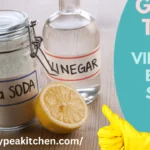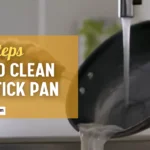Introduction:
Vinyl flooring has become an increasingly popular choice for homes and offices due to its durability, affordability, and low maintenance. One of the advantages of vinyl flooring is that it is relatively easy to clean. However, if you don’t know how to do it properly, you may damage the floor or not get the desired results.
Cleaning vinyl floors involves more than just sweeping and mopping. You need to choose the right cleaning products, tools, and techniques that won’t harm the surface or leave any residue behind. From basic care routines to dealing with tough stains and spills, we will share tips and tricks to help keep your vinyl floors looking cleaner, brighter, and better for years.
Overview of how to clean vinyl flooring
Vinyl flooring is a popular option for many homeowners because of its durability and affordability. However, like any other type of flooring, it requires regular cleaning to maintain its appearance and integrity. The good news is that cleaning vinyl floors is relatively easy.
The first step in cleaning vinyl flooring is to sweep or vacuum the floor to remove loose dirt and debris. For tough stains or buildup, try using vinegar mixed with warm water instead of detergent. Simply mix equal parts vinegar and warm water in a bucket and mop the solution onto the floor. With these simple steps, you can keep your vinyl floors looking cleaner, brighter, and better for years to come.
10 ways how to clean vinyl flooring
1. Sweeping the Vinyl Floor:
To sweep your vinyl floor effectively, start by clearing any large items off the surface. This includes chairs, rugs, and other obstacles that may get in your way. Then, use a soft-bristled broom or a vacuum with a hard-floor setting to remove loose dirt and debris from the surface.
2. Mopping the Floor with Warm Water and Mild Detergent:
This method is simple, effective, and safe for your floors. To begin, fill a bucket with warm water and add a small amount of mild detergent. Mix the solution well. Next, dip a mop into the solution and wring out excess water. Begin mopping the floor in small sections, working from one end of the room to the other. Rinse your mop often in clean water to avoid spreading dirt and grime around.
3. Removing Stains with Baking Soda and Vinegar:
Simply mix some baking soda with water to create a paste and apply it directly to the stain. Let the paste sit for about 10-15 minutes before wiping it away with a damp cloth.
Vinegar is another powerful cleaning agent that can help remove tough stains on your vinyl flooring. Mix equal parts water and vinegar in a spray bottle and spritz the affected area generously. Allow the solution to sit for several minutes before scrubbing gently with a soft-bristled brush or cloth. Rinse thoroughly with clean water afterward to avoid leaving any residue behind.
4. Spot Cleaning with a Vinyl Floor Cleaner:
When it comes time for spot cleaning, start by wiping up any excess debris or liquid from the affected area using a dry cloth. Next, apply the vinyl floor cleaner directly onto the stain or scuff mark and allow it to sit for a few minutes. Afterward, use a soft-bristled brush or sponge to gently scrub the area in circular motions until the stain has been removed completely. Finally, rinse the area thoroughly with warm water and dry it off using a clean towel or mop head.
5. Using a Steam Mop for Deep Cleaning:
To use a steam mop for deep cleaning, begin by vacuuming or sweeping the area to remove loose debris. Then fill the water tank of your steam mop with distilled water and turn it on. Allow it to heat up before using it on your vinyl flooring. When using a steam mop, move it slowly over the floor surface, allowing the steam to penetrate deeply into any crevices or grout lines.
6. Avoiding Abrasive Cleaners and Harsh Chemicals:
These types of cleaners can dull the surface of the vinyl and even strip away its protective coating over time. Look for products that are pH-neutral or have a slightly acidic pH level to ensure they won’t damage your floors. When cleaning your vinyl flooring, always read the labels on any cleaners you plan to use. Avoid using any products that contain bleach, ammonia, or other harsh chemicals as these can cause discoloration and damage to your floors.
7. Drying the Vinyl Floor After Mopping:
After mopping your vinyl floor, it is important to dry it thoroughly to avoid any water damage or staining. One of the easiest ways to do this is by using a clean microfiber mop head or towel. Simply use the mop head or towel to soak up any excess water on the surface of the floor.
8. Buffing the Floor to Restore Shine:
Buffing the floor is an essential part of restoring shine to dull and worn-out vinyl flooring. It involves using a machine with a rotating pad to remove dirt, grime, and scuff marks from the surface of the floor. Buffing can also help to smooth out any scratches or imperfections on the surface of the flooring.
9. Protecting the Floor with a Wax or Sealer:
Waxing your vinyl floor should be done every six months to maintain its durability and shine. Before applying the wax, make sure to thoroughly clean the surface with a mild detergent and warm water. Allow the floor to dry completely before spreading a thin, even layer of wax using a clean mop or applicator pad. After allowing the wax to dry for 30-45 minutes, buff it out with a soft cloth or buffer machine for an extra layer of shine.
10. Regularly Maintaining the Vinyl Floor for Longevity
Regular maintenance of vinyl floors is essential to keep them looking clean and new. Sweeping or vacuuming the floor regularly can prevent dirt and grit from accumulating on its surface, which can cause scratches or damage. It’s also necessary to remove any spills immediately, as leaving them for too long could lead to staining.
Conclusion:
Vinyl flooring can be an excellent addition to any home with its durability, affordability, and versatility. However, it is crucial to maintain the cleanliness and appearance of your vinyl flooring regularly. By using the right cleaning techniques and products, you can keep your floors looking cleaner, brighter, and better for years to come. Remember to sweep, vacuum, mop with a mild cleaner or vinegar solution, and avoid harsh chemicals that could damage your floors. With these simple steps in mind, you’ll enjoy beautiful vinyl flooring that will enhance the look of any room in your home.



